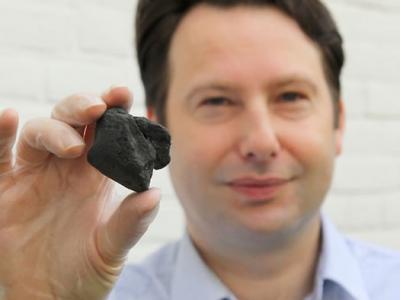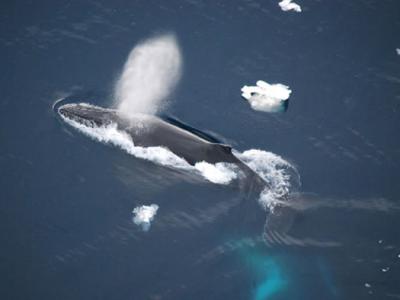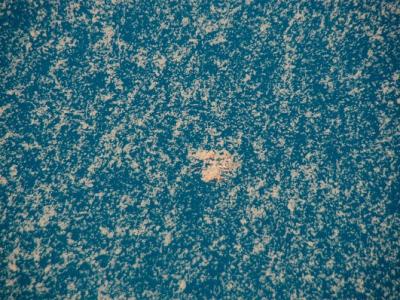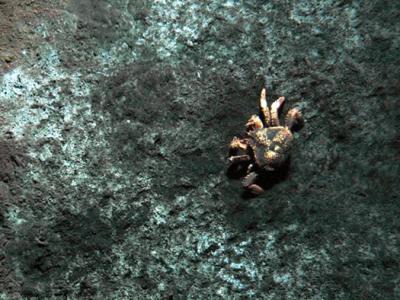Life Began Between the Sheets ... of Mica, Expert Says
An artist's image shows how sheets of the mineral mica may have provided the needed support, shelter, and energy for complex organic molecules such as RNA to form.
The mica sheets are key to a new "soup and sandwich" theory of the origins of life on Earth.
Image by Helen Greenwood Hansma, UCSB
John Roach
for National Geographic News
December 10, 2007
Hot action between the sheets has given many human lives their start. Now a scientist says chemical comings and goings between sheets of the mineral mica may have gotten all life on Earth going.
The layered, flaky mineral could have provided support, shelter, and an energy source to jump-start formation of the first complex organic molecules, according to the new theory.
"I think that explains a lot of puzzles about the origins of life," said Helen Hansma, a biophysicist at the University of California, Santa Barbara.
Hansma presented her hypothesis last week at the American Society for Cell Biology's annual meeting in Washington, D.C.
"Soup and Sandwich"
Hansma likens the mica sheets and organic material gathering between them to a sandwich, adding another food item to the list of analogies scientists use to explain the origins of life.
A primary analogy is that life began in a soup of chemicals, but according to Hansma, the model lacks a mechanism to bring molecules together to form the more complex structures of life.
"Soup alone is too unorganized," she said.
But the space between mica sheets, she noted, is restricted like the interior of a cell. This confinement, given sufficient time, could have allowed complex life to evolve.
"So I'm coming up with a soup-and-sandwich hypothesis," Hansma said.
"Hopefully there was a pre-biotic soup out there to provide some of the simplest molecules, and then the more complex molecules evolved in the sandwich between the mica sheets."
Energy, she noted, would come as water sloshed through the mica layers or from expansion and contraction as the mineral was exposed to temperature changes throughout the day.
"Whatever molecules were between the mica sheets would be continually getting stretched and squished, and I think that would be an energy source for making bonds," Hansma said.
More food for thought: Mica sheets are held together by potassium ions. Potassium, Hansma noted, is important for healthy cells.
"Our cells put a lot of energy into keeping potassium high inside, but I don't think any origin-of-life theory has ever worried about how that got there," she said.
Claymation?
A previously proposed idea holds that the pre-biotic soup was spread over the surface of clays.
As the clay crystals grew, some changed structure and could bind and concentrate different organic compounds, explained John Baross, a biological oceanographer at the University of Washington in Seattle.
He added that many of these clays include layered silicates such as mica.
But according to Hansma, the clay models are slow to produce complex components of life like ribonucleic acid, or RNA.
"I'm curious whether mica will be able to speed up the reactions," she said.
Baross, who is an expert on origin of life theories, said: "As is usually the case, it is time for some experiments."












